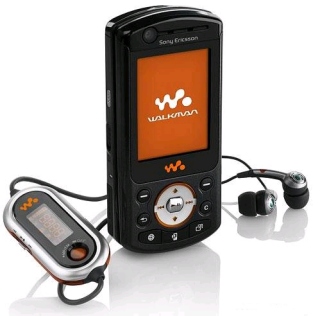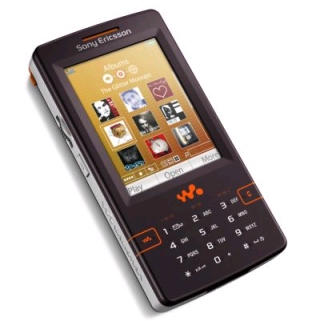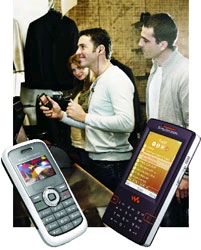 One of the things that the Symbian-powered smartphone market needs to do to grow is to attract new people to smartphones. It’s one of the reasons that the W950 is so appealing to me, as someone watching the Symbian OS platform. First of all, the sheer fact of putting the name "Walkman" onto a phone is going to lead to a lot of people giving the W950 a second glance in the store.
One of the things that the Symbian-powered smartphone market needs to do to grow is to attract new people to smartphones. It’s one of the reasons that the W950 is so appealing to me, as someone watching the Symbian OS platform. First of all, the sheer fact of putting the name "Walkman" onto a phone is going to lead to a lot of people giving the W950 a second glance in the store.
More importantly though, while it’s the first music-focussed smartphone under UIQ (and only the second true Symbian OS music device after the N91), it’s actually one of eleven Sony Ericsson devices to carry the Walkman moniker, and that’s actually more important. Since the first Walkman phone, the capabilities of these devices have been slowly improving. I’ve been spending some time with the earlier devices to find out just how much of a leap someone moving up to the W950 is going to experience.
Probably the big difference is the touch screen, none of the other devices have this. This actually helps, as there is an air of "a touch screen makes a pocket device into a pocket computer". But for fans of the Walkman range, the leap between the W900 (running the proprietary operating system) and the W950 (running UIQ 3) isn’t that huge. The orange colour scheme that seems so loud on the W950 suddenly makes sense – it matches everything else in the range.
The strange decision to lock down the icons on the application screen now also makes sense – it’s the same layout (and the same icons) as on the previous Walkman phone, the W900. Somewhere in the marketing, the decision was made to have the W950 primarily be an extension of the Wxxx range rather than an extension of the Sony Ericsson UIQ devices.
 Which means that a lot of the niggles that we’re seeing on the forums (and in my reviews) come from missing this point – this device isn’t intended to compete with smartphone functionality. It’s a music device all the way – and if the users pick up and use the rest of the features, then that’s a bonus.
Which means that a lot of the niggles that we’re seeing on the forums (and in my reviews) come from missing this point – this device isn’t intended to compete with smartphone functionality. It’s a music device all the way – and if the users pick up and use the rest of the features, then that’s a bonus.
So why go to the lengths of using UIQ in the device, making it look the same as previous devices, making it act the same? Because UIQ isn’t just for the users. It provides a full file system. It gives many more opportunities for a network operator to generate extra revenue through applications like the Web browser. Sony Ericsson have made the potential delivery of music from the network that much easier.
And of course the road is clear for a whole fleet of third party programmers to see what they can do with music – and I think this is going to be where it gets interesting. Every time an open platform is provided to users, they proceed to do something so totally out the box that nobody could have expected it. What will that mean for the W950? I have no idea – and neither do Sony Ericsson, I expect.
What they do know is something I’d be interested in knowing as well. Just how many users of the Walkman smartphone range will actually go through the upgrade path and will end up with the W950 not because they want the Opera web browser, or an email client, or Outlook synchronisation, but because they want another Walkman phone? And this one has the largest storage capacity of any of the Sony Ericsson Walkman devices. From the decisions and styling that the W950 carries, it’s fair to say that the Swedes are expecting a lot more from this route than from the Symbian OS fanboy direction.
 It might be just over a year since the W950 was announced, but it continues to be one of the most interesting devices in the field. While smartphones are pushed as the next big thing, and are slowly seeping into everyday phone choices from the high end, the W950 is like a secret agent. It’s already at the bottom line, lulling people in with a simple tagline of "4GB of music…" There’s no real credit to Symbian OS, or UIQ, anywhere in the packaging or marketing, but it’s there, silent and deadly. If it continues to work and the existing Walkman phone fans don’t notice the switch, then that’s another feather in the cap for this trailblazer.
It might be just over a year since the W950 was announced, but it continues to be one of the most interesting devices in the field. While smartphones are pushed as the next big thing, and are slowly seeping into everyday phone choices from the high end, the W950 is like a secret agent. It’s already at the bottom line, lulling people in with a simple tagline of "4GB of music…" There’s no real credit to Symbian OS, or UIQ, anywhere in the packaging or marketing, but it’s there, silent and deadly. If it continues to work and the existing Walkman phone fans don’t notice the switch, then that’s another feather in the cap for this trailblazer.
Ewan Spence, 20 Feb 2007
